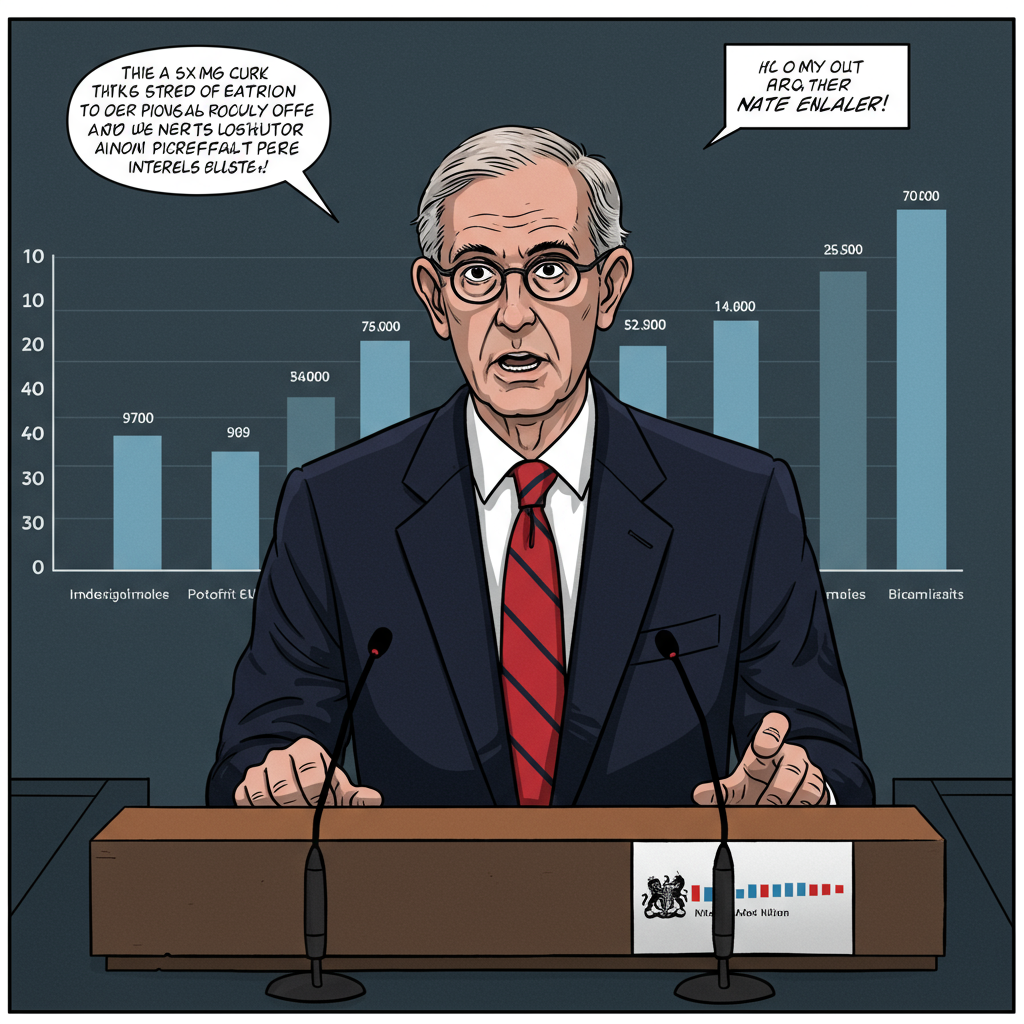The Bank of England has decided to keep the UK’s key interest rate steady at 4.25%. While this move was widely anticipated by financial markets, the central bank’s announcement included a significant hint: future rate cuts are on the horizon, potentially as soon as August.
This decision marks a pause in a period where interest rates had been on a downward path since peaking at 5.25% in August 2023.
Why the Rates Remained Unchanged
Several complex factors influenced the Monetary Policy Committee’s decision to hold rates this month:
Persistent Inflation: Inflation, the rate at which prices rise, remains above the Bank’s 2% target. It currently stands at 3.4% (in the year to May), the highest level in over a year, and is even expected to climb slightly to 3.5% later this year before forecast to fall back to around 2.1% next year. Controlling this persistent price pressure is the Bank’s primary mandate.
Global Uncertainty: Geopolitical tensions, particularly conflicts in the Middle East involving major oil producers like Iran, pose a significant risk. These events can send energy costs higher, which in turn pushes up overall prices in the UK. Deputy Governor Clare Lombardelli described these events as “deeply worrying,” noting the Bank is closely monitoring their potential impact. Oil prices have increased by 26% and natural gas prices by 11% since the Bank’s last meeting in May, underscoring this concern.
Uneven UK Growth: While the Bank marginally lifted its expectations for the UK economy, underlying growth remains “weak,” according to Governor Andrew Bailey. Economic expansion has been patchy this year, with a strong start giving way to a sharp contraction in April.
Signs of Softening at Home
Domestically, the Bank is seeing evidence that its past rate hikes are having an effect, particularly on the jobs market:
Wage growth, a key contributor to inflation, appears to be slowing.
The UK’s unemployment rate has risen.
Businesses are becoming more hesitant to recruit or replace staff.
Governor Bailey noted that the Bank is carefully assessing how these signs of labour market softening will translate into lower consumer price inflation.
Businesses Face Rising Costs
Adding another layer of complexity, businesses are grappling with rising employment costs, partly due to increases in National Insurance and the minimum wage. The Bank estimates these policy changes have increased wage bills by 10%.
While firms are under pressure to pass these costs on through price increases, the Bank’s survey indicates “success is mixed.” Instead, companies are cutting costs in other ways, such as limiting pay rises for workers just above minimum wage or absorbing the costs by taking a hit to their profits. The impact of reduced demand due to economic uncertainty is also evident, with recruitment firm Hays reporting falling fees and a significant drop in its share price.
Impact on Households and Differing Views
For households, the higher interest rate level of recent years means increased borrowing costs for mortgages and credit cards, though savers have seen better returns.
The Bank’s decision drew varied reactions:
A leading business group, the CBI, viewed the pause as a “pit stop on the way down,” expecting rates to be reduced further to around 3.5% by early next year, based on the possibility of three more cuts.
However, accounting body ICAEW and consumer champion Which? described the hold as a “big blow” for those with high mortgage costs.
- Some think tanks, like the Institute For Public Policy Research (IPPR), argued the Bank should have cut rates by 0.25 percentage points already to support struggling households and boost GDP growth.
- www.bbc.com
- www.bbc.com
- www.bbc.com
- www.nbcnews.com
- fortune.com
Susannah Streeter, a market analyst at Hargreaves Lansdown, suggested that despite the current pause, two interest rate cuts are “still on the horizon” this year, with hopes for an August cut remaining alive among borrowers seeking relief.
The Global Context and the Path Ahead
The Bank of England’s decision takes place within a broader global picture where some other major central banks, such as the European Central Bank, have already begun to ease monetary policy. The US Federal Reserve has also signalled its expectation of future cuts as inflation cools and its labour market softens.
The Bank of England uses interest rates as its primary tool to manage inflation. By making borrowing more expensive, it aims to curb spending and ease price pressures. However, it’s a delicate balancing act, as excessively high rates can stifle economic growth by discouraging business investment and hiring.
With inflation still elevated but signs of cooling in the labour market and domestic demand, the focus now shifts to the Bank’s next meeting, scheduled for August 7th. Economists and commentators largely anticipate that this is when the first UK rate cut may occur, provided the incoming economic data supports such a move. The exact timing and pace of future cuts will remain highly dependent on how global events and the UK’s economic picture evolve.




